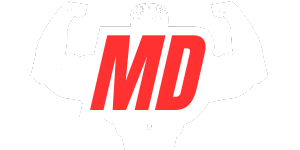There is a lot of talk in the weightlifting world about Sam Sulek. The former swimmer has quickly put on a lot of muscle, and young people who want to be bodybuilders and fitness fans are really into him. On the other hand, some experts have pointed out Sulek’s fast muscle gain and think the 21-year-old is steroid-boosted.
Who is Sam Sulek?
Sam Sulek started his journey to change from the middle of a small town. Sam has been interested in fitness and strength since he was a child. During his teenage years, he used the garden as his testing ground, where he lifted many different weights repeatedly, showing an uncanny ability to build muscle. Sam quickly became known as the neighborhood’s biggest kid because of his strength.
At the young age of 18, Sam made up his mind to take his love of training to a whole new level. He took an important step when he joined a local gym and hired a personal trainer who saw and helped him reach his hidden potential. Under the guidance of his mentor, Sam started a challenging workout plan that focused on building strength and improving his body.
Sam’s TikTok stories and YouTube tutorials help exercise fans find their way around the complicated bodybuilding. People who watch his daily talks can get advice and real information. It makes the path to a big back, a chiseled chest, and strong arms easier for them to understand.
Steroids and Bodybuilding
Steroids, specifically anabolic-androgenic steroids (AAS), are synthetic hormones that mimic the effects of testosterone. While they have legitimate medical uses, such as treating muscle loss in certain conditions, their misuse for performance enhancement is a significant concern.
In the highly competitive arena of professional bodybuilding, the pressure to reach peak physical condition has, at times, led athletes to resort to performance-enhancing drugs to gain a competitive edge.
One of the primary reasons individuals turn to steroids in bodybuilding is the promise of accelerated muscle growth. The enhanced protein synthesis contributes to a rapid increase in muscle mass. Steroids can lead to heightened physical performance, enabling athletes and bodybuilders to train more intensely and recover quicker between sessions. Users may also experience enhanced stamina during workouts due to the increased red blood cell production.
While the benefits are apparent, prolonged steroid use can lead to health issues, including liver damage, cardiovascular complications, and hormonal imbalances. Steroids may also influence mood and behavior, leading to mood swings, aggression, and, in severe cases, psychiatric disorders.
The Steroid Controversies in Bodybuilding
From the 1960s to the 1980s, the Golden Era of bodybuilding witnessed the rise of iconic figures like Arnold Schwarzenegger and Lou Ferrigno.
This period saw a surge in accusations of AAS use, with iconic figures like Lee Labrada and Flex Wheeler facing scrutiny. While neither admitted to specific substances, the era became synonymous with suspicion, and the potential health consequences of steroid use became a significant talking point.
The tragic death of bodybuilder Rich Piana at 46, attributed to multiple organ failure, brought renewed focus to the potential dangers associated with AAS misuse. This incident sparked discussions about the need for stricter regulations and education within the sport.
The early 2000s witnessed the Balco scandal, implicating high-profile athletes in various sports, including bodybuilding. The incident exposed the clandestine world of performance-enhancing drugs.
Physical Indicators of Steroid Use
One of the noticeable signs of steroid use is the rapid and disproportionate growth of muscle mass. If a bodybuilder exhibits an unusually swift transformation, especially in muscle groups known for slow development, it might prompt speculation. It can also contribute to lower body fat percentage, producing thin, almost translucent skin. This extreme leanness, combined with pronounced muscle striations, may raise suspicions.
If a bodybuilder undergoes an abrupt and drastic reduction in body fat, surpassing what an individual can achieve through natural means, it might suggest the use of fat-burning steroids.
Steroids can also enhance vascularity, leading to more prominent veins. A sudden and pronounced vascular appearance could be indicative of performance-enhancing substance use.
Sam Sulek’s Training and Nutrition
Sulek’s meal plan, anchored by a modest 5000-calorie intake, raises eyebrows, especially regarding his carbohydrate consumption. Contrary to the stereotypical clean eating associated with bodybuilders, Sam Sulek’s diet includes store-bought items like burgers and Subway sandwiches. Nutrition experts weigh Sulek’s dietary choices, offering insights into the divergence between conventional wisdom and his chosen path.
Sulek strategically schedules his workouts in the afternoon or evening, attributing it to better physical performance during these times. He typically performs 8-12 reps per set. This approach is a cornerstone for maximizing both muscle growth and strength gains.
He adopts an intensive approach to his workouts, dedicating 1-2 hours to a specific muscle group. His quad workouts, for instance, extend to an hour, emphasizing the volume of sets.
The discussion surrounding performance enhancement in bodybuilding is multifaceted and cannot be solely categorized as “good” or “bad.” It requires a nuanced understanding of the various viewpoints, the potential risks and benefits, and the complex factors influencing athletes’ decisions.
The Evidence
An intriguing aspect emerges as observers note a contradiction between Sulek’s physique and dietary practices. The controversy surrounding Sulek’s fitness journey extends to speculations about steroid usage.
Greg Doucette’s commentary on Sulek’s diet has stirred the pot. Doucette suggests that, based on Sulek’s leanness, facial changes, and the presence of acne, the 21-year-old might be taking high doses of anabolic steroids. Despite the uproar, Sam Sulek has remained silent on the allegations surrounding his potential steroid usage.
Drug Testing and Anti-Doping Policies
There are two main types of drug testing employed in bodybuilding. Organizers conduct in-competition testing on the day of the competition or shortly before. It typically involves urinalysis, where athletes provide a urine sample analyzed for the presence of banned substances.
Out-of-competition testing can occur anytime and anywhere throughout the year, aiming to deter long-term PED use. It often utilizes various methods, including urinalysis, blood tests, and hair testing, each with capabilities and limitations.
While drug testing can be a deterrent and identify some PED use, its effectiveness is not without limitations. Athletes might use masking agents or other methods to attempt to evade detection, making tests less reliable. Additionally, some tests do not detect all PEDs, leaving room for loopholes.
The policies related to steroid use in bodybuilding competitions vary depending on the governing body and the level of competition. The International Federation of Bodybuilding and Fitness (IFBB) adheres to the World Anti-Doping Agency (WADA) Code, which outlines prohibited substances and testing procedures. Violators face sanctions ranging from disqualification to multi-year bans.
Public Opinion and Legal Consequences
The general public often expresses strong disapproval of steroid use in sports. People see steroids as providing an unfair advantage, undermining the level playing field, and diminishing the value of hard work and dedication for athletes who choose not to use them. The use of performance-enhancing drugs can influence the perception of sports for fans and aspiring athletes.
Each professional sports league has its policies regarding performance-enhancing drugs, outlining prohibited substances and outlining penalties for violations. These penalties can range from fines and suspensions to lifetime bans. In some cases, athletes with documented medical conditions can apply for exemptions to use specific medications, including some anabolic steroids, for therapeutic purposes.
The Ethical Considerations
The use of PEDs can be seen as a violation of the true spirit of sport, which focuses on values like fair play, sportsmanship, and the pursuit of excellence through natural talent and dedicated training. PEDs can be perceived as a shortcut that undermines the very essence of athletic competition.
The health and well-being of athletes is a top priority. Many PEDs have known and unknown health risks. Athletes may jeopardize their long-term health in pursuit of short-term success. It raises questions about the responsibility of sports organizations to protect athletes from potential harm.
Sports play a significant role in shaping societal values and cultural norms. The use of PEDs may contribute to a culture of winning at any cost, potentially encouraging similar behavior in other domains of life. It can have broader societal implications beyond the realm of sports.
Alternatives to Steroids
No magic bullet or guaranteed alternative perfectly replicates the muscle-building effects of steroids. However, some other options provide benefits similar to steroids without the associated health risks and legal issues.
Creatine is a naturally occurring compound found in small amounts in certain foods and produced by the body. It enhances strength, increases lean muscle mass, and aids in quicker recovery between workouts. Creatine is safe when used as directed, but individuals with kidney issues should consult a healthcare professional.
BCAAs consist of three essential amino acids for protein synthesis and muscle repair. These supplements support muscle growth, reduce muscle soreness and aid recovery.
Protein supplements, including whey protein, casein, and plant-based proteins, provide essential amino acids for muscle repair and growth. They support muscle recovery, increase protein synthesis, and help meet daily protein requirements.
Frequently Asked Questions
What are anabolic steroids, and how do people use them in bodybuilding?
Anabolic steroids are synthetic variations of the male sex hormone testosterone. They promote muscle growth and enhance performance by increasing protein synthesis and reducing muscle breakdown. In bodybuilding, athletes use these substances to accelerate muscle development, improve strength, and expedite recovery after intense workouts.
Has Sam Sulek ever tested positive for steroids?
No. Sam Sulek also denied using PEDs for bodybuilding. However, many experts and bodybuilding enthusiasts believe that he has been using steroids due to his quick gains and extreme muscle mass.
What are the legal and sports-related consequences of steroid use in bodybuilding?
Legally, the unauthorized use of these substances can lead to criminal charges or fines, as they are often classified as controlled substances. In sports, athletes who test positive for steroids face penalties such as suspension, disqualification, and the forfeiture of titles or medals.



